The Future of Cultural Accomplishments: A Look into the Creative Virtue of Artificial Intelligence
A man stares back from a grey-colored painting, grim, dreary, sorrowful, with strong lines of expression on his face. He is surrounded by what appears to be some sort of fog or dust, which pulls on his silhouette, tearing pieces apart into the background. The crumbling contours of the man emphasize the feeling of despair induced by the painting and indicate defeat. A state of surrender lingers within it, the colorless, disappearing man at its center.
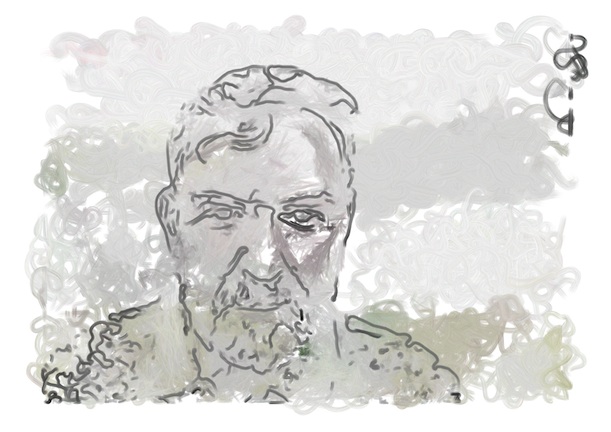
This is one short interpretation of a painting presented at the Galerie Oberkampf in Paris in July 2013, titled “You Can’t Know My Mind”. The description of the painting reads “Mood: negative. Desired quality: bleary.”, indicating the categories used by the painter to compose the picture. The painter, in this case, is genderless, bodiless, without a brush and a pencil, without the natural movements of a blood pumping body, no shakiness in the fine lines, instead the painting was created with an artificial steady hand. This synthetic painter is equipped with a creative awareness, allowing for the expression of emotions from within the machine.The creator or rather the machine, which captured this man’s emotions in different facets is known as the Painting Fool and introduces itself as ”a computer program, and an aspiring painter”. The machine further explains its purpose, which “is for me to be taken seriously – one day – as a creative artist in my own right”.
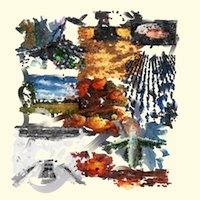
The Painting Fool was designed and programed in 2001 by the British computer scientist Simon Colton, who the machine introduces as its “teacher,” who “believes that if software is to be taken seriously as being creative, it needs to exhibit behaviors that can genuinely be called skillful, appreciative and imaginative”. It was thus designed with the ability to learn with each painting, and then integrate these learned patterns into new paintings. Equipping the Painting Fool with a set of painting styles and techniques to capture certain emotions provides it with some sort of skill, which establishes one of the essential tools every painter needs. One further step to becoming a true painter lies in the program’s ability to adapt to an appreciative behavior, which allows it to scan e.g. articles and extract particular words that are then connected to images. This way the composition of a painting is connected to a more abstract way of thinking and allows the program to realize emotions. The Painting Fool describes the image as being able to “highlight the plight of people living in war zones”, which it created with its own appreciative skills. To complete the painter a third attribute is added, which consists of imaginative behavior. These behaviors enable the program to invent non-existing scenes and visual objects, which help it to express its full capacity of creative work. Theoretically these three elements constitute an independent-minded painter. Is this the future of cultural accomplishments?
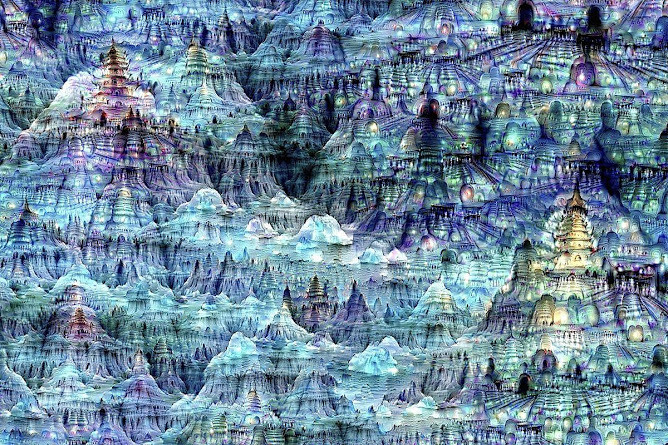
It might be, and it is by far not the only one. Google “Inceptionism” project merged millions of images into a program, which was configured on the structure of the human brain. The application then processes these images until it detects a pattern, that is then morphed into one consistent piece of artwork mirroring the general character of all these images. If the program detects a certain image in an object it will reproduce it, and with every additional similar image the overall painting appears. The program, so to say, learns with every new image it sees and eventually develops its own sense of creativity. Even though Google’s version functions different than the Painting Fool, both programs have one thing in common: the inner ability to learn and create imaginative and reflective artwork.
While these examples show one way how artificial intelligence can create cultural accomplishments there are many other ideas and concepts on how this might work. It furthermore raises the question of the removal of the human artist and the substitution with an artificial intelligence system: Who then is the creative artist? Is it not still the human behind the system, who programmed it to work a certain way, ultimately remaining as the creator? The case of artificial intelligence and its cultural accomplishment is certainly a complex and difficult one, not only because it challenges traditional concepts of thinking, but also because it raises a number of ethical questions. If the machine can reach the ability to substitute human thinking, it might be worthwhile to consider the scope of possibilities with artificial intelligence programs.
One simple example of artificial intelligence learning and processing a series of actions to achieve results is the internet, which to some extend functions likewise a human brain. From its first beginnings to its contemporary dimensions, the internet developed by learning and evolving with every new information and additional connection that was fed into it. Like a child it grew and gathered information, that it could repeat and eventually adjust to its own purpose. It could be argued that the internet even altered its content by filtering information and creating a pattern to provide the best possible match for each user. There are of course restrictions and limits to this kind of thinking, depending on how and where somebody uses the internet, but that this virtual intelligence system has taken on a life of its own is indisputable. Visualizations of the World Wide Web even look like a human nervous system connected over a vast space creating a virtual network that transports messages from one end to the other.
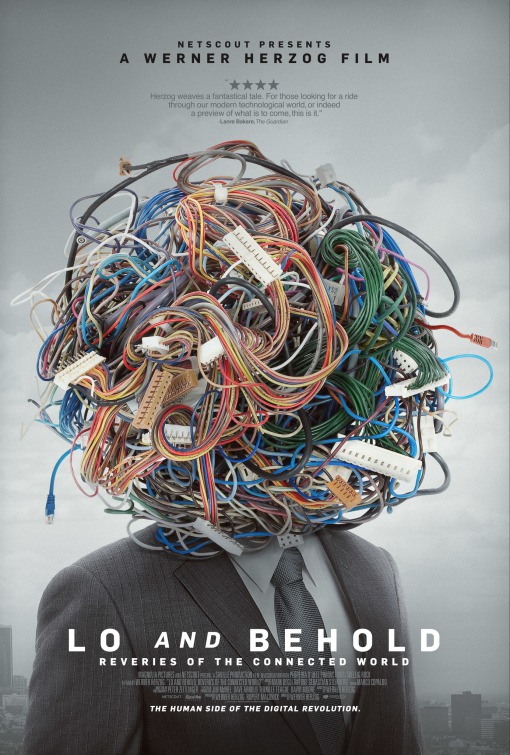
The 2016 film Lo and Behold: Reveries of the Connected World by Werner Herzog follows the internet from its baby steps, through adolescence, and eventually to the present-day accomplishments of the system. Herzog explores the depths of the worldwide web and emphasizes on its flaws, its achievements, and future capabilities. It is astonishing to see how fast the network developed, from a small room at some research facilities to self driving cars. While the ARPANET project at the University of California, Los Angeles looks rather strange for today’s standards, it set the foundation for the internet that is known today by introducing the method of packet switching. It allowed for data to be transmitted in blocks, ultimately increasing network efficiency.
The movie then presents a number of attributes of the internet – positive and negative. On a positive view there is a biomolecular research project that benefits from community work made possible by the internet, which helped provide chemical molecules for the scientists, but there is also a family terrorized by images of the car accident that killed their daughter and sister and which were shared without permission on the web. An offline community is presented, which makes a case for radiation sickness, in stark contrast to Elon Musk’s vision of Mars travel and research projects focused on intelligent robots. All cases present a reflected independent network with a potential autonomous future, that possesses the ability to create its own accomplishments.
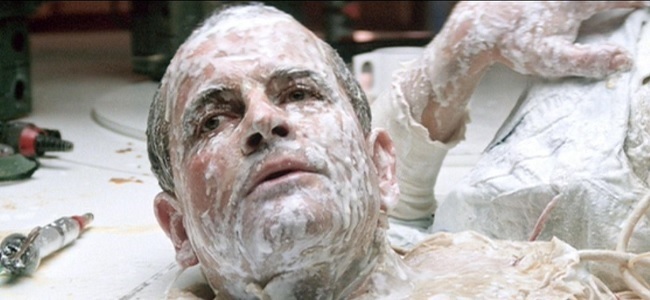
Glimpses into such a future have long been part of the Hollywood narrative in a variety of scenarios. Most famously must be the character HAL 9000, a sentient computer program from Stanley Kubrick’s 2001: A Space Odyssey (1968), who develops its own sense of survival after it starts to malfunction and tries to kill the astronauts on board the spaceship. Another famous character equipped with artificial intelligence is Ash from Ridley Scott’s Alien (1979), an android who betrays the crew by strictly following orders to bring home an alien life form despite the fatal danger the creature poses for the human crew. A more comedic approach was taken by Neill Blomkamp in Chappie (2015), where a police robot equipped with artificial intelligence becomes part of a gangster crew planning to do a major heist with the help of Chappie.
Especially the characters from 2001: A Space Odyssey and the Alien franchise feed into the narrative of artificial intelligence versus the human mind in competition. The android characters from the Alien franchise first introduced with Ash and in later movies Bishop in Aliens (1986), Annalee Call in Alien Resurrection (1997), and David 8 in Prometheus (2012), provide a more humanoid form of artificial intelligence. They are so much disguised as human that it takes the crew some time to realize they are not. HAL 9000 on the other hand is obviously a machine who at first assists the crew until it starts to malfunction and turn against them, revealing an inner sentiment of its own will. When the crew attempts to stop HAL by turning the system off it tries to kill them in order to survive. The androids in the Alien universe and the computer system from A Space Odyssey are arguably some of the most advanced artificial intelligence systems in comparison to actual non-fictional present-day achievements in the field. Dreams of the future they may be, but they ask inevitable questions regarding the essence of intelligence thinking and human moral.
If painting human emotions and capturing sceneries are the accomplishments of today’s machines, the integration of artificial intelligence into human thinking might be the results in the future. Artificial intelligence guiding its own thoughts and wanting to explore on its own, e.g. David 8 in Prometheus, might become a necessary addition for human accomplishments, but always with the danger to develop a momentum of its own, independent from human influence. The Painting Fool might be an early experiment of such futuristic concepts, but it shows the extend of power artificial intelligence programs can possess in imitating human achievements. A machine that is able to create cultural accomplishments such as paintings, literature, or music, might eventually become an integral part of human life. This is and will not necessarily be a negative constituent, but it surely is one that needs close surveillance and a watchful eye to guide humans own creation into a morally maintainable future.
Sources
Abstract Portraits Were Painted By An Artificial Intelligence
Google’s Artificial Brain Creates Its Own Artworks
What do you think? Leave a comment.











I am reminded of an old joke:
A machine was asked to translate the proverb “out of sight, out of mind” into another language, and then translate it back into English. The final version was “Invisible Idiot”.
Please, stop.
Images created by an art bot could be sold as art if the marketing pitch were right. Conceptualism can justify (to superficial minds) anything at all as art, just as long as the seller knows the right patter to use.
AI created art is not art. The “artist” has no empathy with its subject, and the viewer has no empathy with the artist. Nor is the computer free in the way that a human artist is. It is merely obeying a set of rules. To admire its creativity or taste would be absurd.
AI… You should be worried.
Why be worried? AI will not compete with humanity because we do not use the same resources apart from electricity which in a few decades will finally be ‘too cheap to meter’.
The only way AI might turn on us is if we assume that they are a problem and try to shut them down.
The proof that computers have become more intelligent than humans is if we create computers capable of making us redundant. It would be the height of short-sighted stupidity to create computers that become masters rather than servants – just because we can. A computers/robots should be slaves that enables us all to become fulfilled and happy and that don’t present us with moral difficulties. I don’t want to have to worry about the feelings and needs of my washing machine or fridge – I just want them to get on with the job for which they were designed. The key word in the phrase ‘artificial intelligence’ is ‘artificial’ – don’t try to replicate human intelligence because that necessarily involves emotions, rights, individuality, etc. Instead, scientists should focus on creating an artificial intelligence that serves humans and not itself.
Unless it just comes as a singularity super intelligence that just destroys us all before we have time to worry or to have a thousand extra robo Van Goths.
I am sure robots will generate new, surprising and exciting artifacts. Not an imitation of human style painting but things that will stimulate our cognitive systems in unprecedented ways.
It’s a shame that the example of computer-generated art is so poor. The latest approaches based on deep learning are pretty amazing. Here’s some of “Deep Forger’s” work : https://storify.com/alexjc/deep-forgeries-manchester-new-year
Art as a response to lived experience.
My computer writes better than Martin Amis, and its artwork easily surpasses that of Damien Hirst. Now all I need is a program that excels at selling crap.
It’s the projection of intelligence.
In the absence of any conscious awareness, or consciousness even, although very complex, and an extraordinary feat of engineering, it’s still just artifice. Which is to say, not intelligence in terms of the real meaning of the word.
I was an early computer geek but I’m glad I got out of it. All robots will do is make rich people richer.
One of the first important steps towards true artificial intelligence surely is the creation of systems which are able to perform and engage in activities comparable to the capabilities of the average human. The challenge of AI is not necessarily to create intelligence in the image of a genius, but in the image of everyday, bog standard intelligence.
Hmm. Lots to think about.
A whole NEW angle on TV shows, robots presenting cooking programmes, buying houses and doing ’em up and competing against each other flogging antiques.
Artificial Intelligence is just cool.
At some point, what ‘we’ eat, what ‘we’ read, and what ‘we’ consider to be art will be made by machines. At some later point, their food, writing, and art will become what we are used to, and thus what we prefer.
I think we are moving more towards a general acceptance of the theories of Ray Kurzweil. As a society, we are more accepting of the idea of a physical Artificial Intelligence, after all, we’ve had it jam packed in our media for the past 40+ years. Hell, we had one on Jeopardy. Because of this physical acceptance, more and more people are considering the social and philosophical problems with integrating AI into our world.
I’m rather excited for the world of artificial intelligence. I feel as if it would be beneficial to society.
The question is really not how well AI can imitate human-generated art, but whether it brings anything new to the table. Can humans and AI collaborate to produce new creative forms?
Computers cannot create art by themselves – they are programmed. The intention of the programmer is always behind the code.
Algorithms cannot create art because they have no intention, no emotion, or as a previous commenter said – no lived experience.
This is not art, these are mere curiosities.
This is an exciting field and I’ve been watching it for some time now. We have come a long way from The Painting Fool. Many of the objections put forward saying that AI cannot create ‘art’ draw lines of distinction solely for the sake a reserving ‘art’ as a human activity. However, there are plenty of paintings made (have a look at eBay!) by humans that have no intention, emotion, or lived experience. Anthropocentric biases based on fear of the ‘Other’ – as it has been throughout the history of humanity.
It was once ‘common knowledge’ that women couldn’t be ‘real’ artists, that slaves couldn’t think for themselves. I hope we don’t (though I fear we will) repeat the same mistakes when it comes to AI.